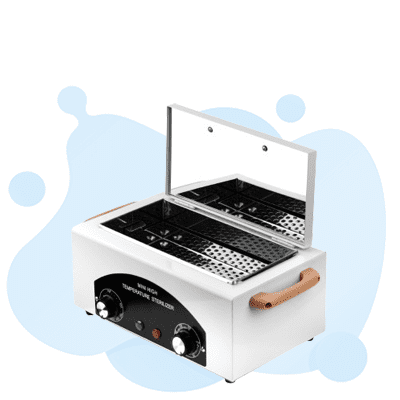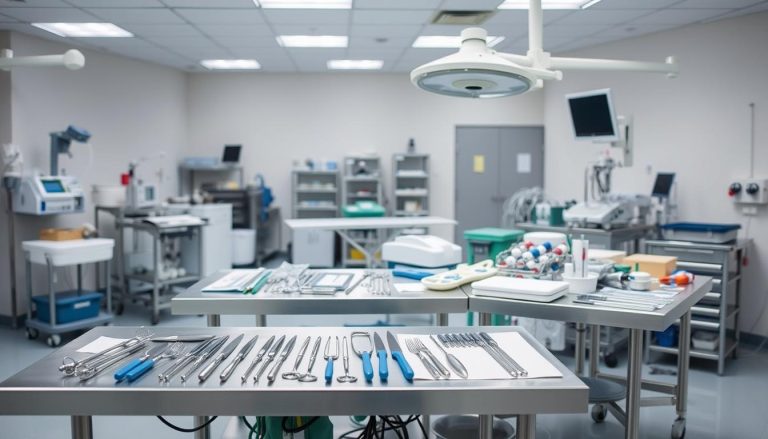CBSPD Test: Your Guide to Sterile Processing Certification

As a healthcare professional, keeping medical instruments clean and safe is crucial. The CBSPD (Certification Board for Sterile Processing and Distribution) test proves your skills in cleaning and reusing medical devices. This guide will help you understand and pass the CBSPD certification test.
Free CBSPD Practice Test Online
Key Takeaways
- The CBSPD test is a key credential for those in sterile processing and medical device reprocessing.
- Getting certified shows you know how to sterilize, prevent infections, and follow the rules.
- You need the right education and work experience to qualify for the test.
- Preparing for the exam means using study materials, knowing the exam format, and what it covers.
- The CBSPD test includes questions on sterilizing surgical tools, cleaning, and storing them safely.
Understanding the CBSPD (Certification Board for Sterile Processing and Distribution) Test
The CBSPD test is key for those in sterile processing. It checks if professionals know how to keep patients safe from infections. It makes sure they follow the best ways to keep things clean and safe in hospitals.
Purpose and Benefits of Certification
Getting certified shows that sterile processing workers know how to clean and store things safely. It shows they are up to date with the latest in cleaning and keeping infections away. This is important for keeping patients safe and healthy.
Eligibility Requirements
To take the CBSPD test, you need a high school diploma and some work experience. You should have at least a year of experience in healthcare, focusing on cleaning and following rules.

| Eligibility Criteria | Requirements |
|---|---|
| Education | High school diploma or equivalent |
| Work Experience | Minimum of 1 year in a healthcare setting, with hands-on experience in sterile processing |
Knowing what the CBSPD certification is about helps people decide if it’s right for them. It’s a big step in their career in keeping things clean and safe in healthcare.
Preparing for the CBSPD Exam
Those wanting to become sterile processing pros need to prepare well for the CBSPD exam. It’s key to use good study materials to learn about surgical instrument sterilization, decontamination procedures, sterile storage protocols, medical device reprocessing, infection prevention measures, medical sterilization, surgical instrument preparation, and sterilization techniques.
Study Resources and Materials
To pass the CBSPD exam, you’ll need to use different study tools, such as:
- Textbooks and study guides made for CBSPD exam prep
- Online courses and webinars on the exam topics
- Practice tests and quizzes to check and boost your knowledge
- Websites from professional groups, like the CBSPD and IAHCSMM, with study materials
Test Format and Content Areas
The CBSPD exam has 150 multiple-choice questions. It checks your knowledge in sterile processing and medical sterilization. The topics covered are:
- Decontamination and Disinfection Procedures
- Preparation and Packaging
- Sterilization Processes
- Sterile Storage and Distribution
- Infection Prevention Measures
- Surgical Instrument Handling and Preparation
Knowing the exam’s format and topics helps candidates make a focused study plan. This way, they can show they’re skilled in sterile processing.
Key Topics Covered in the CBSPD Test
The CBSPD test covers many important topics. These are key for making sure medical devices and instruments are safely sterilized. Candidates will be tested on their knowledge of surgical instrument sterilization, decontamination procedures, and sterile storage protocols.

Knowing about infection prevention measures and following healthcare sterilization standards is vital. The test checks if someone knows how to properly reprocess medical devices and sterilize them. Those wanting to be central supply technicians need to know how to prepare surgical instruments and use different sterilization techniques.
By learning these important topics, candidates show they have the skills needed for CBSPD certification. This helps them play a key role in keeping patients safe and preventing infections in healthcare.
